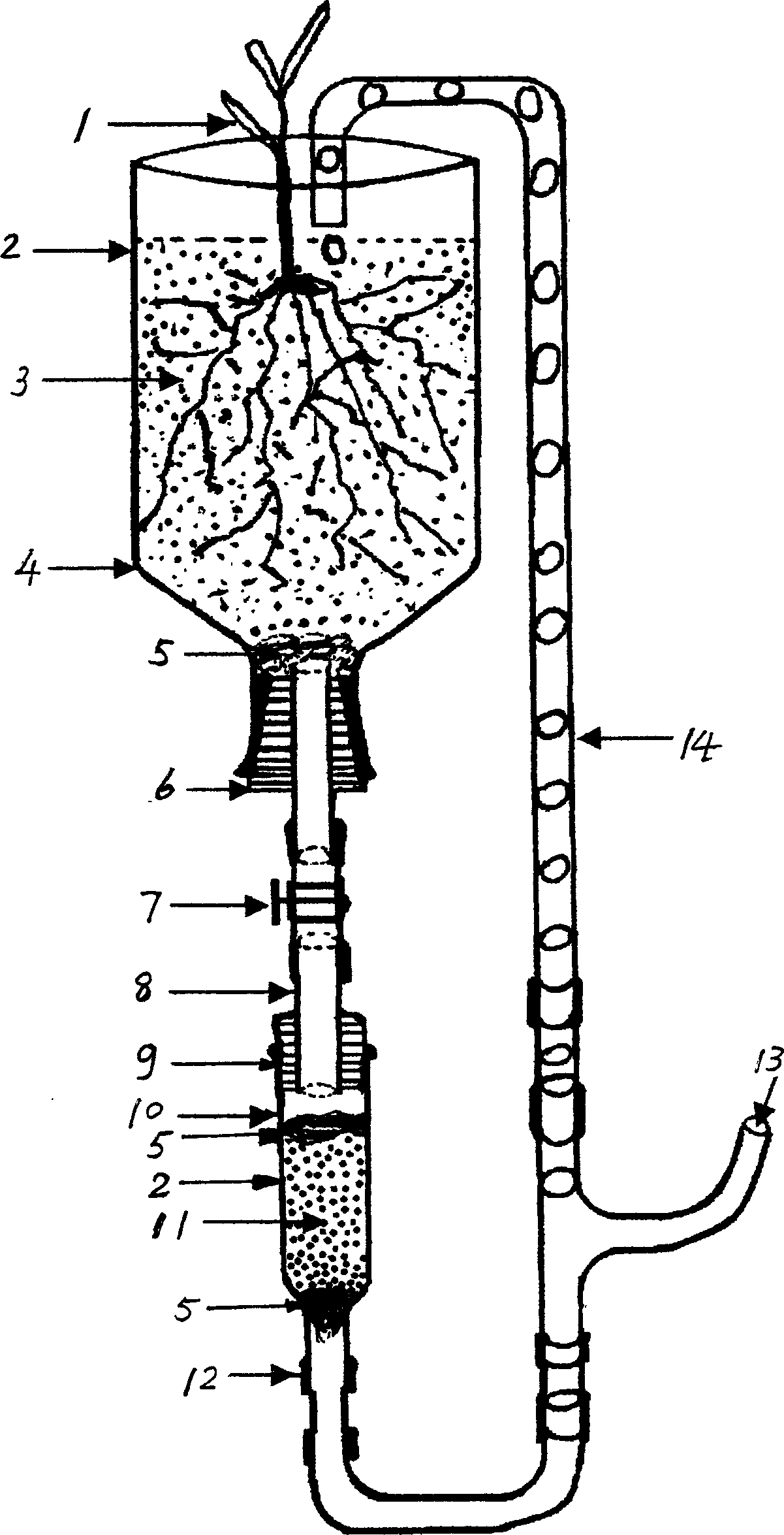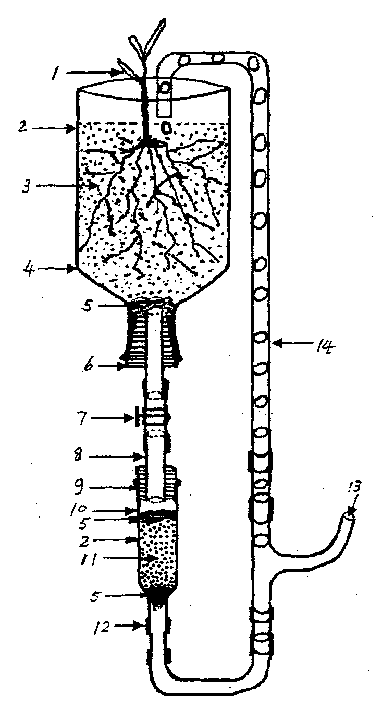Plant root excretion continuous collection method and apparatus
A technology of root exudates and exudates, applied in the field of continuous collection methods and devices for plant root exudates, capable of solving problems such as low exudate content, denaturation of compounds, prolonging collection time, etc., and achieving the effect of short collection time
- Summary
- Abstract
- Description
- Claims
- Application Information
AI Technical Summary
Problems solved by technology
Method used
Image
Examples
Embodiment 1
[0017] [Example 1] Provide the nutrients needed for plant growth with Hoagland nutrient solution of 1 / 3 strength, after the plants grow to a certain period (about 20 days), rinse with distilled water in the bottomless glass dish Quartz sand 4 times (200ml each time), and then washed 2 times with deionized water (18.2MΩ2cm). Install the glass bottle containing Amberlite IRC-50 cationic resin and other devices, connect the power supply, and fill the air pump with continuous air bubbles, which will make the solution circulate through the resin in the glass bottle, and the resin will adsorb amino acids. After 60-72 hours of collection, the solution in the glass bottle was sucked dry, eluted, concentrated and filtered. Amino acids were determined with or without derivatization.
Embodiment 2
[0018] [Example 2] Provide the nutrient elements needed for the plant growth of inoculated mycorrhizal fungi with 1 / 3 strength Hoagland (Hoagland) nutrient solution, after the plant grows to a certain period (about 20 days), rinse with distilled water Put the quartz sand in the bottomless glass dish 4 times (200ml each time), and then wash it with deionized water (18.2MΩcm) twice. Install the glass bottle containing Amberlite IRC-50 cationic resin and other devices, connect the power supply, and fill the air pump with continuous air bubbles, which will make the solution circulate through the resin in the glass bottle, and the resin will adsorb amino acids. After 60-72 hours of collection, the solution in the glass bottle was sucked dry, eluted, concentrated and filtered. Amino acids were determined with or without derivatization.
Embodiment 3
[0019] [Example 3] Provide the nutrient elements needed for plant growth with 1 / 3 strength Hoagland (Hoagland) nutrient solution, after the plant grows to a certain period (about 20 days), rinse in the bottomless glass dish with distilled water Quartz sand 4 times (200ml each time), and then washed with deionized water (18.2MΩcm) 2 times (200ml each time). Install the glass bottle containing Dowex-1 anion resin, connect the power supply, and fill the air pump with continuous air bubbles. The air bubbles will make the solution circulate through the resin in the glass bottle, and the resin will absorb the organic acid. After 60-72 hours of collection, the solution in the glass bottle was sucked dry, eluted, concentrated and filtered. Determination of organic acids.
PUM
| Property | Measurement | Unit |
|---|---|---|
| Particle size | aaaaa | aaaaa |
Abstract
Description
Claims
Application Information
 Login to View More
Login to View More - R&D
- Intellectual Property
- Life Sciences
- Materials
- Tech Scout
- Unparalleled Data Quality
- Higher Quality Content
- 60% Fewer Hallucinations
Browse by: Latest US Patents, China's latest patents, Technical Efficacy Thesaurus, Application Domain, Technology Topic, Popular Technical Reports.
© 2025 PatSnap. All rights reserved.Legal|Privacy policy|Modern Slavery Act Transparency Statement|Sitemap|About US| Contact US: help@patsnap.com


